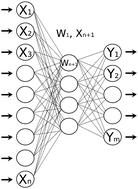The monitoring of atmospheric Alternaria spores is of major importance due to their adverse effects on crops and their role as human allergens. Most species act as plant pathogens, prompting considerable economic losses worldwide on important crops such as potato, tomato or wheat. Fungal spores can also have serious detrimental effects on human health, triggering respiratory diseases and allergenic processes. The aim of this study was not only to examine the relationship between the atmospheric Alternaria spore content and the prevailing meteorological parameters, but also to predict the atmospheric Alternaria spore content in the Northwest Spain using a novel data analysis technique, ANNs (Artificial Neural Networks). A Hirst-type LANZONI VPPS 2000 volumetric 7-day recording sampler was used to collect the airborne spores from 1997 to 2008. Neural networks provided us with a good tool for forecasting Alternaria airborne spore concentration, and thus could help the automation of the prediction system in the aerobiological information diffusion to the population suffering from allergic problems or the prevention of considerable economic worldwide losses on important crops. Our proposed model would be applied to different geographical areas; nevertheless, the adjustment of the model, by using the available and adequate variables, would be realised in each case.

You have access to this article
 Please wait while we load your content...
Something went wrong. Try again?
Please wait while we load your content...
Something went wrong. Try again?


 Please wait while we load your content...
Please wait while we load your content...